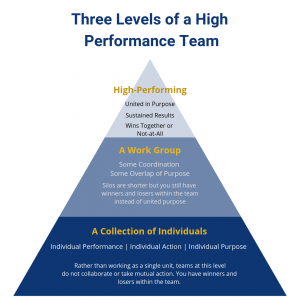There is a natural tendency for all of us to postpone action until it’s absolutely necessary, which makes our action a reaction. In business, if you’re standing still and waiting for the next shoe to drop, you have already lost.
Considering the recent threats of trade wars, heightened geopolitical uncertainty, and forecasts of an elevated probability of a U.S. recession in 2020, now is the time to prepare for the next inevitable downturn in the economic cycle.
Why Now?
When Bain analyzed the aftermath of the Great Recession, its findings confirmed those of other research done years before. This earlier research found that only 9% of companies emerged from recession to outperform their competitors by at least 10% in terms of sales and profit growth in the first three years of recovery. Similarly, Bain found that the top 10% of the companies it tracked also prospered.
In both studies, the companies that came out of the downturn in a stronger financial position had something in common: They were recession-ready.
Because businesses without contingency plans are left to react to downturns with drastic cuts and reactionary practices, these firms were too depleted from operating in survival mode to do much more than stumble forward by the time recovery was possible. This damage may have been avoidable with the proper preparation.
How to Recession-Proof Your Business
Regardless of where the economy is in its cycle, you can be recession-ready by implementing four basic measures:
1. Manage your exposure to and use of debt. SEC chairman Jay Clayton recently noted that U.S. corporate debt is almost $ 10 trillion, an amount close to half the nation’s annual GDP — and an amount that’s at an all-time high. When high debt coincides with an economic slowdown, the resulting financial distress for leveraged businesses tends to infect the entire economy. Because there are other options for financing operations, make it your policy to manage cash flow and not rely on credit simply because it’s available.
2. Eliminate customers who are aren’t profitable. Customers who cost more than they return to your bottom line represent an unnecessary risk to your business. In the event of a recession, remember that their payment problems are likely to become yours by proxy. Focus your resources on growing relationships with your best customers.
3. Be a good customer. As you consider which of your clients you feel comfortable riding out a recession with, also ensure that your vendors have every reason to feel confident in doing business with you. If your cash flow can’t cover even 5% of your purchases, pay closer attention to what you are doing and how. Operating off of your business credit is a shortcut to financial trouble.
4. Take care of your employees. It makes good business sense to approach all your relationships fairly and transparently. Workers are loyal to those who treat them well in both good times and bad. Review your policies to ensure you retain and attract the skilled workers you need in place to remain strong during the next recession.
We live in a world that’s more interconnected than ever, and that lets us keep better watch for what’s to come. Leaders who create contingency plans for economic downturns during good times have proven that recession preparedness minimizes financial damage in bad times. Make sure you’re one of them.
Business & Finance Articles on Business 2 Community
(37)






